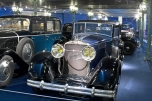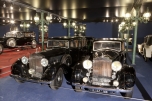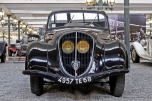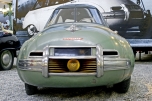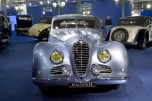Cars from 1920 to 1950 - The golden age of the car
Mercedes Type W125
1937
Code 1619
Body style: GP single-seater
This car was born of the combination of high-level engineering, associated with the unlimited resources of the Nazi regime, which saw auto-sport as an excellent propaganda tool. The W125 represented the ultimate in powerful Mercedes-Benz engines in Grand Prix.
At the end of the 1930s, the new rules of Grand Prix racing limited engine weight to 750 kg, in order to make the cars slower and safer. This was when Mercedes designed a fearsome single-seater, Code W125. Weight was cut through the use of light alloys of aluminium or magnesium. This crash diet left space for an 8-cylinder, 5560 cc engine that burned a mixture of methanol, ethyl alcohol and benzole, which gave the beast a power output of 660 horsepower, and top speeds of over 320 kph (200 mph). The few journalists that had the chance to test drive it reported that at speeds over 200 kph (125 mph) in top gear, they could still get a wheelspin by accelerating too sharply. This level of power was not beaten until the 1980s, when turbo-charged Formula 1 racers came along.
With drivers Rudi Caracciola and Hermann Lang at the wheel, the W125 clocked up plenty of race wins, often leaving the Bugattis, Alfa Romeos and Maseratis trailing. In 1937, the W125 swept the board, winning almost every event it entered.










